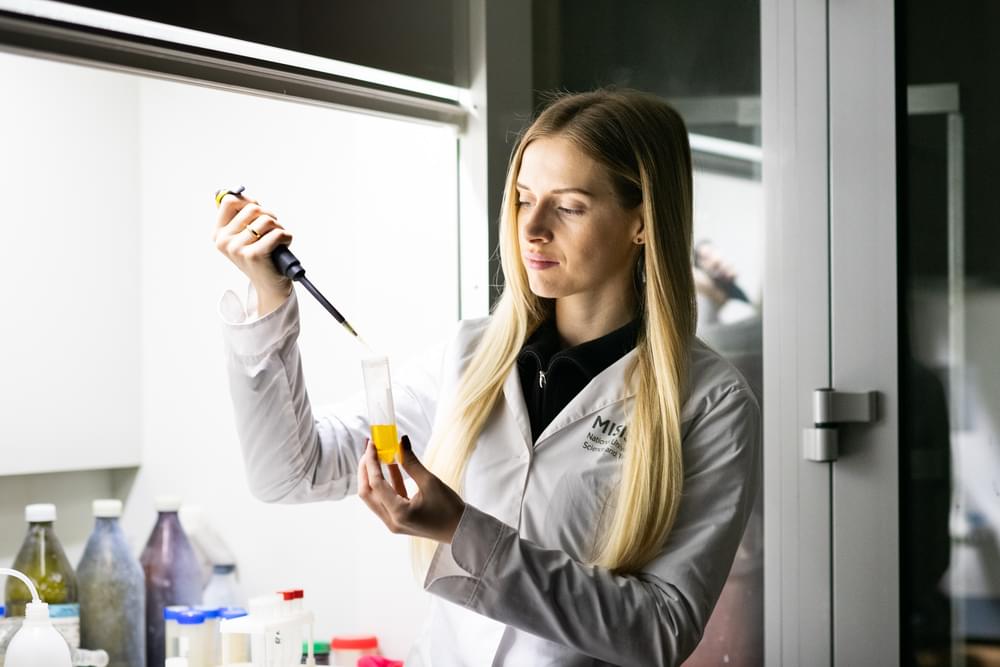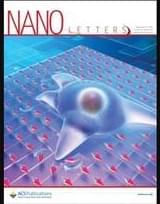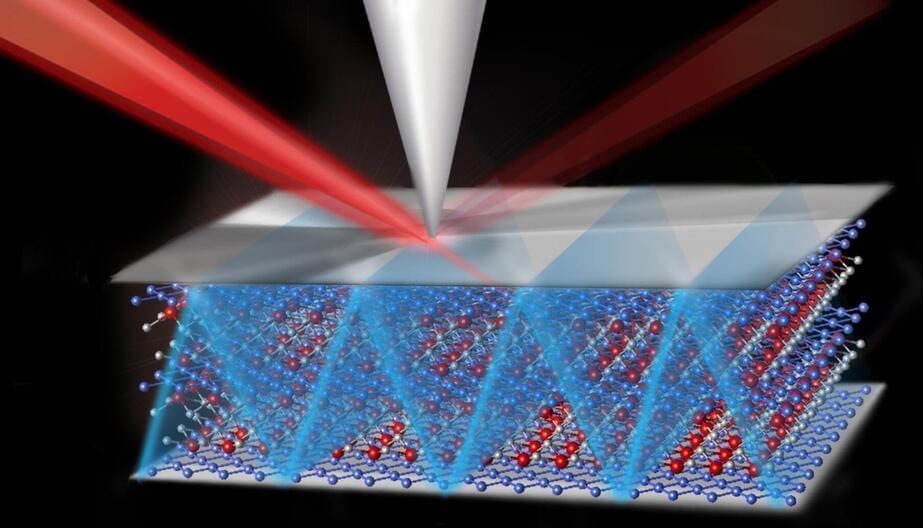
Get the latest international news and world events from around the world.


Communication Breakdown: Into the Molecular Mechanism of Biofilm Inhibition
Bacterial biofilm formation is a huge problem in industry and medicine. Therefore, the discovery of anti-biofilm agents may hold great promise. Biofilm formation is usually a consequence of bacterial cell–cell communication, a process called quorum sensing (QS). CeO2 nanocrystals (NCs) have been established as haloperoxidase (HPO) mimics and ecologically beneficial biofilm inhibitors. They were suggested to interfere with QS, a mechanism termed quorum quenching (QQ), but their molecular mechanism remained elusive. We show that CeO2 NCs are effective QQ agents, inactivating QS signals by bromination. Catalytic bromination of 3-oxo-C12-AHL a QS signaling compound used by Pseudomonas aeruginosa, was detected in the presence of CeO2 NCs, bromide ions, and hydrogen peroxide. Brominated acyl-homoserine lactones (AHLs) no longer act as QS signals but were not detected in the bacterial cultures.

All-Optical Modulation of Single Defects in Nanodiamonds: Revealing Rotational and Translational Motions in Cell Traction Force Fields
Measuring the mechanical interplay between cells and their surrounding microenvironment is vital in cell biology and disease diagnosis. Most current methods can only capture the translational motion of fiduciary markers in the deformed matrix, but their rotational motions are normally ignored. Here, by utilizing single nitrogen-vacancy (NV) centers in nanodiamonds (NDs) as fluorescent markers, we propose a linear polarization modulation (LPM) method to monitor in-plane rotational and translational motions of the substrate caused by cell traction forces. Specifically, precise orientation measurement and localization with background suppression were achieved via optical polarization selective excitation of single NV centers with precisions of ∼0.5°/7.5 s and 2 nm/min, respectively.
Sam Harris on “Free Will”
This lecture was recorded on March 25, 2012 as part of the Distinguished Science Lecture Series hosted by Michael Shermer and presented by The Skeptics Society in California (1992–2015).
SAM HARRIS IS THE AUTHOR of the New York Times bestsellers, The Moral Landscape, The End of Faith and Letter to a Christian Nation. His new book is short (96) pages, to the point, and will change the way we all view free will, as Oliver Sacks wrote: “Brilliant and witty — and never less than incisive — Free Will shows that Sam Harris can say more in 13,000 words than most people do in 100,000.” UCSD neuroscientist V.S, Ramachandran notes: “In this elegant and provocative book, Sam Harris demonstrates — with great intellectual ferocity and panache — that free will is an inherently flawed and incoherent concept, even in subjective terms. If he is right, the book will radically change the way we view ourselves as human beings.”
Order the book on which this lecture is based: http://goo.gl/zHMx9
Watch some of the past lectures for free online.
https://www.skeptic.com/lectures/
SUPPORT THE SOCIETY
Civilizations at the End of Time: Iron Stars
Use my link http://www.audible.com/isaac and get a free audio book with a 30 day trial!
In the previous episode we saw how civilizations might not simply survive after all the stars in the Universe had died, but might indeed thrive far better during the Black Hole Era of the Universe. Today, we will go beyond even the Dark Era to examine the concepts or Iron Star Civilizations, Boltzmann Brains, Reversible Computing, and even reversing Entropy itself.
Visit our Website: http://www.isaacarthur.net.
Join the Facebook Group: https://www.facebook.com/groups/1583992725237264/
Support the Channel on Patreon: https://www.patreon.com/IsaacArthur.
Visit the sub-reddit: https://www.reddit.com/r/IsaacArthur/
Listen or Download the audio of this episode from Soundcloud: https://soundcloud.com/isaac-arthur-148927746/civilizations-…iron-stars.
Cover Art by Jakub Grygier: https://www.artstation.com/artist/jakub_grygier.
Graphics Team:
Edward Nardella.
Jarred Eagley.
Justin Dixon.
Katie Byrne.
Misho Yordanov.
Murat Mamkegh.
Pierre Demet.
Sergio Botero.
Stefan Blandin.
Script Editing:
Andy Popescu.
Connor Hogan.
Edward Nardella.
Eustratius Graham.
Gregory Leal.
Jefferson Eagley.
Luca de Rosa.
Michael Gusevsky.
Mitch Armstrong.
MolbOrg.
Naomi Kern.
Philip Baldock.
Sigmund Kopperud.
Steve Cardon.
Tiffany Penner.
Music:
Fermi Paradox Great Filters: Rare Intelligence
We conclude our look at possible explanations why life may be very rare in the Universe by looking at the evolutionary pathway to intelligence and the hurdles between life starting on a planet and migrating off of it.
Use my link http://www.audible.com/isaac and get a free audio book with a 30 day trial!
Visit our Website: http://www.isaacarthur.net.
Join the Facebook Group: https://www.facebook.com/groups/1583992725237264/
Support the Channel on Patreon: https://www.patreon.com/IsaacArthur.
Visit the sub-reddit: https://www.reddit.com/r/IsaacArthur/
Listen or Download the audio of this episode from Soundcloud: https://soundcloud.com/isaac-arthur-148927746/rare-intelligence.
Cover Art by Jakub Grygier: https://www.artstation.com/artist/jakub_grygier.
Graphics Team:
Edward Nardella.
Jarred Eagley.
Justin Dixon.
Katie Byrne.
Kris Holland of Mafic Stufios: www.maficstudios.com.
Misho Yordanov.
Pierre Demet.
Sergio Botero: https://www.artstation.com/sboterod?fref=gc.
Stefan Blandin.
Script Editing:
Andy Popescu.
Connor Hogan.
Edward Nardella.
Eustratius Graham.
Gregory Leal.
Jefferson Eagley.
Luca de Rosa.
Mark Warburton.
Michael Gusevsky.
Mitch Armstrong.
MolbOrg.
Naomi Kern.
Philip Baldock.
Sigmund Kopperud.
Steve Cardon.
Tiffany Penner.
Music:


Twitter is reportedly working on an OnlyFans-style feature that would allow creators to charge for video content — but some employees say it’s high risk
Twitter is working on a feature that would charge users for some video content, The Washington Post reported.
Referred to as “Paywalled Video,” the new feature would allow content creators to charge users a fee to view videos on the platform, according to an internal email obtained by the publication.
The Post reported that a Twitter employee, who spoke on the condition of anonymity, said it seemed like a feature that would probably be used at least partly for adult content.

Physicists see light waves moving through a metal
When we encounter metals in our day-to-day lives, we perceive them as shiny. That’s because common metallic materials are reflective at visible light wavelengths and will bounce back any light that strikes them. While metals are well suited to conducting electricity and heat, they aren’t typically thought of as a means to conduct light.
But in the burgeoning field of quantum materials, researchers are increasingly finding examples that challenge expectations about how things should behave. In new research published in Science Advances, a team led by Dmitri Basov, Higgins Professor of Physics at Columbia University, describes a metal capable of conducting light. “These results defy our daily experiences and common conceptions,” said Basov.
The work was led by Yinming Shao, now a postdoc at Columbia who transferred as a Ph.D. student when Basov moved his lab from the University of California San Diego to New York in 2016. While working with the Basov group, Shao has been exploring the optical properties of a semimetal material known as ZrSiSe. In 2020 in Nature Physics, Shao and his colleagues showed that ZrSiSe shares electronic similarities with graphene, the first so-called Dirac material discovered in 2004. ZrSiSe, however, has enhanced electronic correlations that are rare for Dirac semimetals.

The cosmologist who claims to have evidence for the multiverse
HOW did our universe begin? This is among the most profound questions of all, and you would be forgiven for thinking it is impossible to answer. But Laura Mersini-Houghton says she has cracked it. A cosmologist at the University of North Carolina at Chapel Hill, she was born and raised under communist dictatorship in Albania, where her father was considered ideologically opposed to the regime and exiled. She later won a Fulbright scholarship to study in the US, forging a career in cosmology in which she has tackled the origins of the universe – and made an extraordinary proposal.
Mersini-Houghton’s big idea is that the universe in its earliest moments can be understood as a quantum wave function – a mathematical description of a haze of possibilities – that gave rise to many diverse universes as well as our own. She has also made predictions about how other universes would leave an imprint upon our own. Those ideas have been controversial, with some physicists arguing that her predictions are invalid. But Mersini-Houghton argues that they have been confirmed by observations of the radiation left over from the big bang, known as the cosmic microwave background.